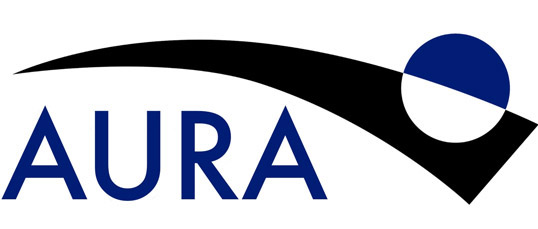UT elected to association of top astronomy programs
June 28th, 2016 by Meghan CunninghamThe University of Toledo has been selected to join a prestigious association that includes many of the top astronomy programs in the nation.
In recognition of the astronomy and astrophysics program’s strengths in research, education and outreach, UT was admitted as the 41st member of the Association of Universities for Research in Astronomy, which goes by the acronym AURA.
AURA operates world-class astronomical observatories, including the National Science Foundation’s Gemini Observatory, Large Synoptic Survey Telescope, National Optical Astronomy Observatory and National Solar Observatory, as well as the National Aeronautics and Space Administration’s Space Telescope Science Institute. 
The association’s role is to establish, nurture and promote public observatories and facilities that advance innovative astronomical research.
“We are impressed with your strong astronomy program and with your commitment to the future,” AURA President Matt Mountain wrote in his welcome letter to the University. “It is our mission to advance astronomy and related sciences, to articulate policy and respond to the priorities of the astronomical community, and to enhance the public understanding of science. We do this by developing and operating national and international centers that enable merit-based research by members of the astronomical community. I believe and trust that The University of Toledo and AURA have many goals and objectives in common.”
“It was very exciting to learn that our application was accepted and we were elected to become a member,” said Dr. Karen Bjorkman, dean of the UT College of Natural Sciences and Mathematics, Distinguished University Professor of Astronomy and Helen Luedtke Brooks Endowed Professor of Astronomy. “If you look at the list of members of AURA, it really is a who’s who of some of the best astronomy programs in the country, and for us to be added to that list is a recognition of the level we have been striving to reach.”
AURA was founded in 1957 and has had a strong role in providing input and guidance on matters of astronomy policy.
“It is one of the most important voices for professional astronomers in the United States to have input on decisions made on astronomy in this country,” said Bjorkman, who will serve as UT’s member representative to AURA.
In addition to the now 41 U.S. institutional members, AURA also receives input from four international affiliates in Chile, Japan and Australia. Having a voice at the table on the future of astronomy is key, as are the opportunities for UT faculty and students who will benefit from interactions with colleagues at AURA member universities, Bjorkman said.
UT qualified for membership because of its robust research efforts that include undergraduate and graduate students who experience hands-on training. That research also gets communicated to the community through strong outreach programs via the Ritter Planetarium and Brooks Observatory, Bjorkman said.
“We have a program that has intentionally intertwined education, research and outreach,” she said. “The research we do gets communicated back to community and to the students and to the public. That is an important responsibility of scientists.”
The astronomy and astrophysics programs are housed within UT’s Department of Physics and Astronomy. Some examples of the group’s many competitive achievements include two researchers who were among the first to access the European Space Agency’s Herschel far-infrared space-based telescope to study the creation of stars and life cycles of galaxies. Dr. Tom Megeath, UT professor of astronomy, led the Herschel Orion Protostar Survey (HOPS), and Dr. J.D. Smith, associate professor of astronomy, led a team in the Key Insights on Nearby Galaxies: A Far Infrared Survey with Herschel (KINGFISH).
During the past eight years, astronomy researchers at UT have received more than $7.6 million in external funding, primarily from the National Science Foundation and NASA, with a number of discoveries earning national attention.
In 2012, UT entered into a 10-year science partnership with the Lowell Observatory for guaranteed access to the 4.3-meter Discovery Channel Telescope, which provides additional opportunities for research and allows students to become involved in conducting observations at a major facility.
“Astronomy is a science that really gets people excited,” Bjorkman said. “Even if people don’t become astronomers, they get excited about science at young ages and that helps with curiosity and scientific literacy that is important in whatever they do.”
Tags: College of Natural Sciences and Mathematics
Meghan Cunningham is
UT's Director of University Communications. Contact her at 419.530.2410 or meghan.cunningham@utoledo.edu.
Email this author | All posts by
Meghan Cunningham

